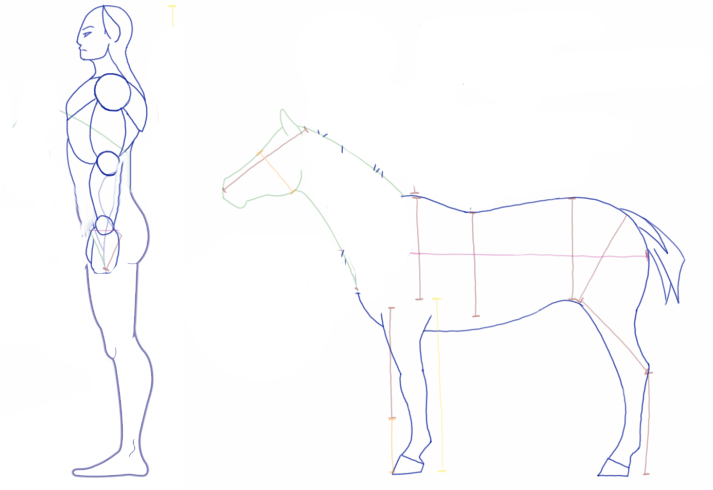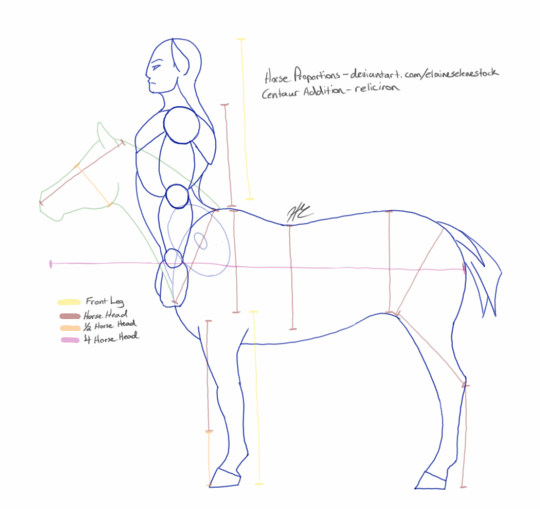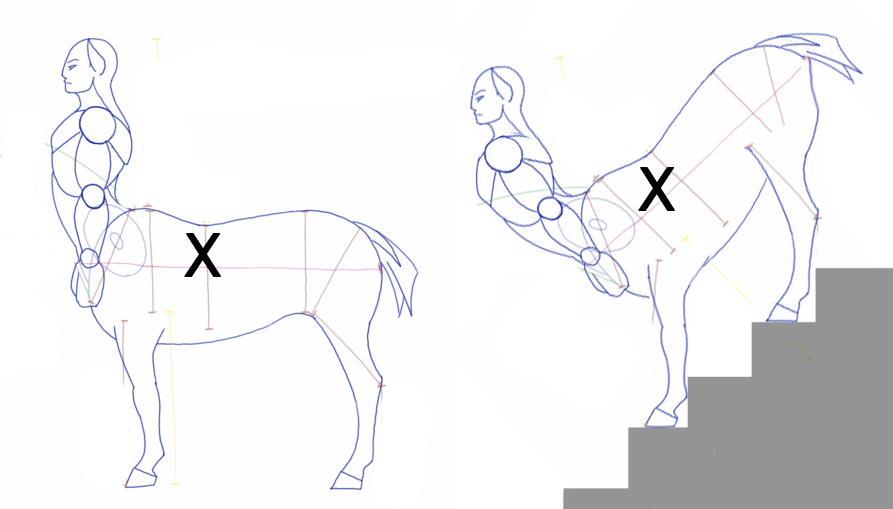When Upright, everything is fine, but it becomes a problem when going down hill.
On level terrain, this centaur works just fine. despite being heavier, human part is barely ahead of the horse part keeping the center of gravity somewhere safely between the front and back legs, but since the OP linked to this question about stairs, I suspect his real interest is a centaur's center of gravity going down hill... this is where it becomes a problem.
Because the OP shows the human part coming out forward of the neck and arching the back to be upright, it is unlikely based on human or horse biology that it can tilt the human part back much father than this upright position. So as it goes down hill, this human part will not be able to adjust to move the Center of Mass back nearly as much as the legs coming forward will move the Center of Mass forward.
The more significant factor though is that as you tilt the horse, the Center of Mass comes in line with the forelegs. As the Center of Mass approaches the forelegs, weight is distributed to only these legs making a down hill walk very strenuous. If the stairs are steep enough, it can even put your Center of Mass forward of your forelegs which could cause your centaur to tumble going down hill with angles of more than about 25-40 degrees (depending on how much it can squat its back legs and arch its human bits).

Why is the center of mass so far forward to begin with?
Because you've drawn your horse body very small compared to your human body. This is fine if this is how you want it, but if you were to extrapolate the humanoid part to standard human male dimensions, you would find that if the body belonged to a 6ft tall 178lb human, that the horse part would belong to a 10.5 hand tall 595lb horse. So this is less of a man:horse size ratio and more of a man:donkey or man:pony ratio. This is common in the way people draw centaurs because we want to draw the centaur's head at the same height as a rider's head, but a rider sits on top of the horse whereas a centaur's human part meats the horse at its lower lumbar region; so, we scale up the human bits to make it work.
The human parts that are included in the centaur are about 67% of a human's total mass; so, we can roughly say the human part should weight about 120lb. A horses head is typically 10% of its mass, so we are replacing ~60lb of head with ~120lb of human parts. The typical Center of Mass on a horse is located about mid-chest just behind the shoulder blades or ~60% of the way between the butt and manubrium, but since we are doubling the mass of the "head" from 10 to 20% of the centaur's weight, we need to adjust the COM a bit forward and upward of this







